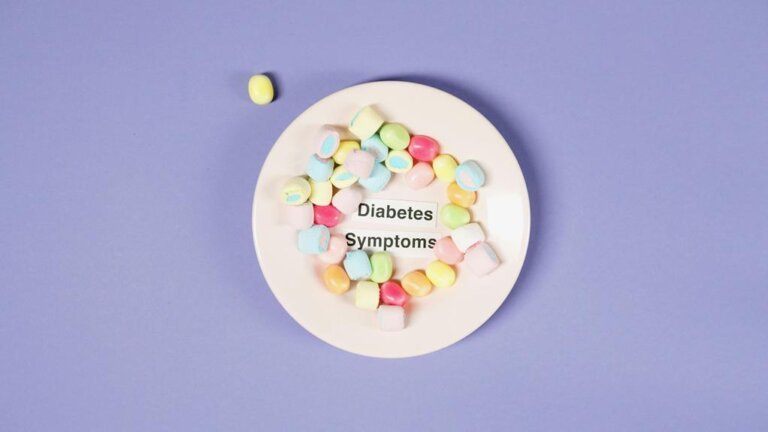Understanding the Risk Factors: Why Are Women More Prone to Diabetes?
Diabetes, a chronic and potentially life-threatening disease, affects millions of people worldwide. In recent years, the number of people diagnosed with diabetes has been increasing at an alarming rate. While both men and women can develop diabetes, women are more likely to be affected by this disease. According to the Centers for Disease Control and Prevention (CDC), women are 1.6 times more likely to have diabetes compared to men. This disparity in diabetes prevalence among genders has been observed globally, across different age groups and ethnicities. The question then arises, why are women more prone to diabetes? Is it due to genetic factors, lifestyle choices, or hormonal changes? In this article, we will delve deeper into understanding the risk factors that contribute to the higher prevalence of diabetes in women. By gaining a better understanding of these risk factors, we can take steps towards prevention and management of diabetes in women.
Hormonal changes can increase risk.
Various hormonal changes that occur in women throughout their lives can contribute to an increased risk of developing diabetes. One such change is during pregnancy, where the body undergoes significant hormonal fluctuations that can affect insulin sensitivity. Gestational diabetes, a temporary condition that usually resolves after childbirth, is characterized by high blood sugar levels and can increase the likelihood of developing type 2 diabetes later in life. Additionally, the hormonal fluctuations during menopause can also impact insulin resistance, potentially leading to a higher risk of diabetes in postmenopausal women. It is crucial to acknowledge and understand these hormonal changes and their potential implications in order to effectively address and manage the risk of diabetes in women.for more articles on diabetes click here
Genetics play a significant role.
The role of genetics cannot be overlooked when considering the risk factors associated with diabetes. Family history plays a significant role in determining an individual’s susceptibility to the disease. Research has shown that if a person has a parent or sibling with diabetes, their risk of developing the condition is higher. This can be attributed to certain genetic variations that affect how the body processes and regulates insulin. While genetics alone may not be the sole determinant of diabetes, it certainly plays a crucial role in predisposing individuals to the condition. Understanding the genetic factors involved can help healthcare professionals develop personalized prevention and management strategies for individuals at higher risk. By addressing both genetic and lifestyle factors, it is possible to mitigate the risk of diabetes and promote better health outcomes.

Lifestyle choices can impact development.
Adopting a healthy lifestyle is essential in mitigating the risk of various health conditions, including diabetes. Lifestyle choices such as diet, physical activity, and stress management can significantly impact an individual’s development and overall well-being. A balanced and nutritious diet, rich in fruits, vegetables, and whole grains, can help regulate blood sugar levels and maintain a healthy body weight. Engaging in regular physical activity, such as aerobic exercises and strength training, not only improves insulin sensitivity but also promotes cardiovascular health. Additionally, managing stress through techniques like mindfulness and relaxation exercises can positively influence hormone levels and reduce the risk of developing diabetes. By making conscious choices to prioritize a healthy lifestyle, individuals can proactively contribute to their overall health and reduce the likelihood of developing diabetes.
Pregnancy can trigger gestational diabetes.
During pregnancy, hormonal changes and weight gain can increase a woman’s risk of developing gestational diabetes. Gestational diabetes is a condition characterized by high blood sugar levels that occur during pregnancy and typically resolve after childbirth. The hormones produced by the placenta can interfere with the action of insulin, the hormone responsible for regulating blood sugar levels. As a result, the body may struggle to effectively use insulin, leading to elevated blood sugar levels. Women who are overweight or have a family history of diabetes are at a higher risk of developing gestational diabetes. Additionally, advanced maternal age and certain ethnic backgrounds also contribute to the increased susceptibility. It is crucial for pregnant women to receive regular prenatal care and to monitor their blood sugar levels to ensure early detection and appropriate management of gestational diabetes, as it can have short-term and long-term consequences for both the mother and the baby.
Polycystic ovary syndrome increases susceptibility.
Polycystic ovary syndrome (PCOS) is a hormonal disorder that affects women of reproductive age and is characterized by the presence of cysts on the ovaries. Beyond its reproductive implications, PCOS has also been linked to an increased susceptibility to developing diabetes. The underlying mechanisms for this association are multifaceted. PCOS is often accompanied by insulin resistance, a condition in which the body’s cells do not respond properly to the hormone insulin. This can result in higher levels of insulin in the bloodstream, leading to an increased risk of developing type 2 diabetes. Furthermore, PCOS is frequently associated with obesity, which itself is a major risk factor for diabetes. The excess weight, particularly around the abdomen, can further contribute to insulin resistance and impair the body’s ability to regulate blood sugar levels effectively. Understanding this increased susceptibility is essential in the management and prevention of diabetes in women with PCOS. By addressing insulin resistance and maintaining a healthy weight through lifestyle modifications and appropriate medical interventions, the risk of developing diabetes can be reduced in this population.
Age and weight can influence diagnosis.
Age and weight are two important factors that can influence the diagnosis of diabetes in women. As women age, their risk of developing diabetes increases. This may be due to hormonal changes, decreased physical activity, and changes in body composition. Additionally, weight plays a significant role in diabetes diagnosis. Excess weight, especially in the form of abdominal fat, is associated with insulin resistance, a precursor to diabetes. The combination of age and weight can create a higher risk for women in developing this chronic condition. Therefore, healthcare professionals should consider these factors when evaluating and diagnosing diabetes in women, emphasizing the importance of lifestyle modifications and regular screenings for early detection and prevention.
Ethnicity can play a factor.
It is important to recognize that ethnicity can also play a significant role in diabetes risk among women. Studies have shown that certain ethnic groups, such as African Americans, Hispanics, Native Americans, and Asians, are more prone to developing diabetes compared to others. This increased susceptibility may be attributed to a combination of genetic predisposition, cultural factors, and disparities in healthcare access and quality. For example, African American women tend to have higher rates of obesity and insulin resistance, which contribute to their elevated risk of diabetes. Similarly, cultural dietary practices and lifestyle choices can impact diabetes prevalence among different ethnic groups. Healthcare professionals must be mindful of these ethnic disparities and tailor their prevention and treatment strategies accordingly to ensure equitable care for all women at risk of diabetes.
Early detection is key for prevention.
To effectively combat the growing prevalence of diabetes among women, early detection is essential for prevention. Detecting diabetes in its early stages allows for timely intervention and management, significantly reducing the risk of complications. Regular screenings and routine check-ups are crucial, as they enable healthcare providers to identify elevated blood sugar levels or other warning signs before symptoms manifest. By implementing proactive measures, such as regular blood glucose testing and monitoring, women can take control of their health and make necessary lifestyle modifications to prevent or manage diabetes more effectively. Additionally, healthcare professionals should prioritize education and awareness campaigns to empower women to recognize the importance of early detection and seek appropriate medical care promptly. By emphasizing the significance of early intervention, we can strive towards a future where diabetes rates among women are reduced, improving overall health outcomes and quality of life.
In conclusion, it is clear that there are various risk factors that make women more prone to developing diabetes. However, it is important to note that these risk factors do not guarantee a diagnosis of diabetes. By understanding and addressing these risk factors, women can take proactive steps towards preventing or managing the disease. Through regular check-ups, a healthy lifestyle, and awareness of family history, women can lower their risk and maintain their overall health. It is essential for both healthcare providers and individuals to recognize and address these risk factors in order to combat the prevalence of diabetes in women.
FAQ
What are some of the biological factors that make women more prone to diabetes compared to men?
Women are more prone to diabetes due to hormonal changes like menopause and pregnancy, which can affect insulin sensitivity and glucose metabolism. Additionally, women tend to store fat in different areas than men, such as in the hips and thighs, which can impact insulin resistance. Genetic factors and differences in how men and women process nutrients also play a role in the higher prevalence of diabetes in women. Regular screening, healthy lifestyle habits, and monitoring blood sugar levels are crucial for women to manage their risk of developing diabetes.
How do hormonal changes, such as during pregnancy or menopause, affect a woman’s risk of developing diabetes?
Hormonal changes during pregnancy can lead to gestational diabetes, a temporary condition that increases the risk of developing type 2 diabetes later in life. Menopause can also affect diabetes risk due to the decrease in estrogen levels, which may lead to insulin resistance and weight gain. Both pregnancy and menopause can influence hormonal balance and metabolic function, impacting a woman’s susceptibility to developing diabetes. Regular monitoring and lifestyle modifications are essential in managing these risks.
Are there any lifestyle factors that contribute to the increased risk of diabetes in women, such as diet and exercise habits?
Yes, lifestyle factors such as poor diet high in sugar and unhealthy fats, lack of physical activity, and being overweight or obese can significantly increase the risk of diabetes in women. Engaging in regular exercise, maintaining a healthy diet rich in fruits, vegetables, and whole grains, and managing weight can help reduce this risk. Additionally, factors like stress, smoking, and poor sleep habits can also contribute to a higher likelihood of developing diabetes in women. Adopting healthy lifestyle choices can play a crucial role in preventing and managing the disease.
How does a woman’s genetic predisposition play a role in her likelihood of developing diabetes?
A woman’s genetic predisposition can influence her likelihood of developing diabetes by affecting her body’s ability to produce and use insulin effectively. Certain genetic factors can increase the risk of insulin resistance, impaired glucose regulation, and overall susceptibility to diabetes. Additionally, genetics can impact other risk factors associated with diabetes, such as obesity, high blood pressure, and abnormal lipid levels. While genetics can play a significant role in diabetes development, lifestyle factors like diet, exercise, and weight management also contribute to overall risk.
What steps can women take to lower their risk of developing diabetes, particularly if they have other risk factors such as a family history of the disease?
Women at risk of developing diabetes, especially those with a family history, can reduce their risk by maintaining a healthy weight through regular exercise and a balanced diet. They should also monitor their blood sugar levels, avoid sugary foods, and prioritize whole grains, fruits, vegetables, and lean proteins in their diet. Regular medical check-ups, managing stress, and getting enough sleep are also important to lower the risk of diabetes. Finally, staying informed about the disease, its symptoms, and early detection methods can empower women to take proactive steps towards prevention.





